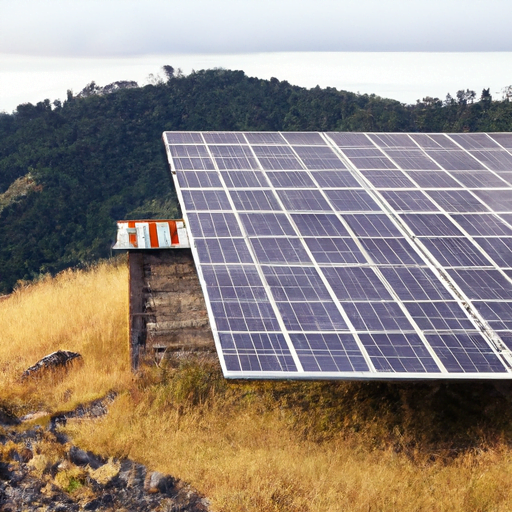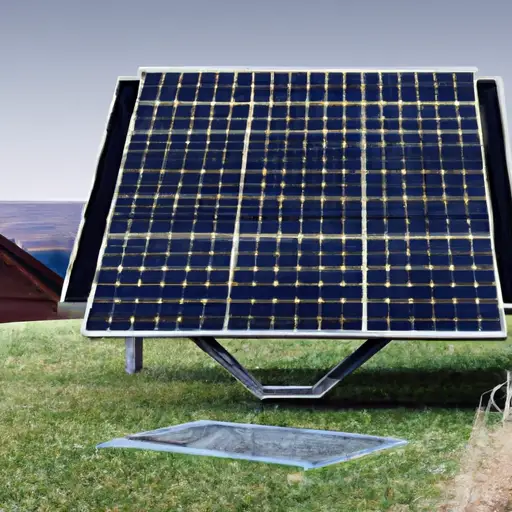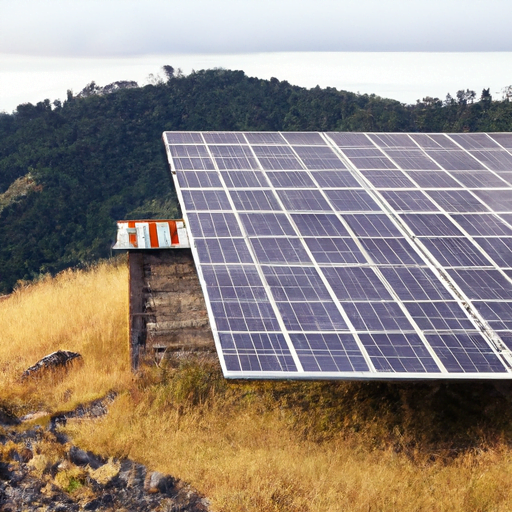Have you ever wondered how many people in the US are living off the grid? It’s an interesting concept, isn’t it? To be completely self-sufficient and disconnected from the conventional power grid. Well, in this article, we’re going to dive into the numbers and learn more about the off-grid lifestyle.
Living off the grid essentially means relying on renewable sources of energy and being independent from public utilities. This can include generating your own electricity through solar panels or wind turbines, using rainwater harvesting systems, and even growing your own food. It’s a way of life that promotes sustainability and minimal environmental impact.
Now, you might be curious to know just how many people in the US have chosen to live off the grid. While exact numbers are hard to come by, various estimates suggest that there are around 180,000 to 200,000 off-grid households in the country. This number includes individuals and families who have intentionally decided to disconnect from the traditional power grid and live in a self-sustainable manner.
In our upcoming article, we’ll explore the reasons why people choose to live off the grid, the challenges they face, and the benefits they enjoy. We’ll also discuss some of the different ways people can go off-grid and the technologies that support this lifestyle. So, if you’re curious about the off-grid movement and want to learn more about this alternative way of living, stay tuned for our next piece.

Factors contributing to off-grid living
Living off-grid, or independently from public utilities, is becoming an increasingly popular lifestyle choice in the United States. There are several factors that contribute to the rise of this phenomenon.
Environmental consciousness
One of the primary reasons people choose to live off the grid is their environmental consciousness. By relying on renewable energy sources such as solar panels, wind turbines, or biodiesel generators, off-gridders can reduce their carbon footprint and minimize their impact on the environment. They prioritize sustainability and strive to live in harmony with nature.
Self-sufficiency and independence
Off-grid living allows individuals to become more self-sufficient and independent. By generating their own electricity, collecting rainwater, and growing their own food, off-gridders rely less on external resources and become more self-reliant. This sense of autonomy attracts those seeking a simpler and more self-sustaining lifestyle.
Financial considerations
Another motivation for living off the grid is economic. By producing their own energy and reducing their dependence on utility companies, off-gridders can significantly lower their monthly expenses. This financial freedom allows them to allocate resources towards other necessities or personal goals.
Defining ‘off-grid’
Before delving into the statistics, it is important to understand what is meant by the term ‘off-grid’. Living off-grid refers to not being connected to the public utility grid for electricity, water, gas, or sewage services. This can encompass a wide range of living arrangements, from completely self-sufficient homesteads to semi-off-grid homes that utilize some public utilities.
Off-grid vs. grid-tied
Off-grid living is the antithesis of grid-tied living, where individuals rely on the public utility grid for all their energy needs. Grid-tied homes are connected to the electrical grid and typically supplement their energy consumption with electricity purchased from utility companies. In contrast, off-grid homes generate their own energy through renewable sources and are not connected to the grid.
Off-grid energy sources
Off-grid homes rely on various energy sources to meet their electricity needs. Solar power is a popular choice, with solar panels converting sunlight into electrical energy. Wind turbines are another renewable energy source utilized by off-gridders, harnessing wind power to generate electricity. Other options include hydroelectric power, biomass, and even geothermal energy in certain regions.
Methods to determine the number of off-grid people
Estimating the number of people living off the grid in the US is a challenging task due to several factors. Accurate data on off-grid populations is difficult to obtain, but researchers have developed a few methods to make estimations.
Challenges in data collection
The decentralized nature of off-grid living presents challenges for data collection. Traditional methods of data gathering, such as census surveys, often do not account for individuals living in remote or off-grid areas. This lack of data hinders the accuracy of estimates and makes it challenging to determine the precise number of off-grid individuals.
Estimations based on energy consumption
One method to estimate the number of off-grid people is by analyzing energy consumption patterns. Researchers analyze energy consumption statistics and compare them to the average energy usage of grid-tied households. By identifying regions or localities with significantly lower energy consumption than the national average, they can infer the presence of off-grid communities.
Surveys and self-reporting
Surveys and self-reporting are also used to gather information about off-grid living. Researchers conduct surveys to collect data directly from individuals living off the grid. The survey questions may inquire about energy sources, water supply, and waste management practices. While this method relies on self-reported data, it provides valuable insights into the experiences and motivations of off-grid individuals.

Current statistics on off-grid living in the US
Estimating the exact number of off-grid individuals in the US is challenging due to limited data availability. However, various sources have provided estimates and regional variations can be observed.
Estimates from various sources
According to a report by the US Energy Information Administration, an estimated 1.7% of households in the US were off-grid as of 2020. This equates to approximately 1.8 million households, encompassing around 4.6 million individuals. However, it should be noted that these figures are approximations and may not capture the full extent of off-grid living.
Regional variations
Off-grid living is more prevalent in certain regions of the US. States with large rural areas, such as Alaska, Montana, and Wyoming, have higher proportions of off-grid households. These regions often have more favorable conditions for self-sufficiency, such as ample sunlight or wind resources. However, off-grid communities can also be found in more urban areas, where individuals strive for autonomy and sustainability within city limits.
Trends over time
The number of off-grid individuals has been steadily increasing over the years. As renewable energy technologies become more accessible and affordable, more individuals are opting for off-grid living. Additionally, the environmental and financial considerations mentioned earlier are driving this upward trend. While the precise rate of growth is challenging to determine, it is clear that off-grid living is becoming more widespread.
Implications of off-grid living
Off-grid living has several implications that extend beyond the individuals who choose this lifestyle. These implications can be categorized into environmental, social and community, and policy considerations.
Environmental impact
From an environmental perspective, off-grid living has a positive impact. By reducing reliance on traditional energy sources, off-gridders contribute to reducing greenhouse gas emissions and mitigating climate change. Additionally, their emphasis on self-sustainability promotes regenerative practices, such as organic farming and water conservation, which promote ecosystem health.
Social and community aspects
Off-grid living fosters a sense of community and collaboration. Individuals living off the grid often rely on each other for support and exchange of knowledge and resources. These communities promote a sense of belonging and interdependence, strengthening social bonds and building resilient networks. Off-grid living can also inspire and motivate others to adopt more sustainable practices, creating a ripple effect within communities.
Policy considerations
The growing number of off-grid individuals raises important policy considerations. Governments and utility companies need to adapt to this changing landscape by developing flexible regulations that accommodate off-grid living. This includes providing incentives for renewable energy installations, streamlining permitting processes, and ensuring that off-grid communities have access to necessary resources and infrastructure.
Advantages and disadvantages of off-grid living
While off-grid living offers numerous benefits, it is not without its challenges and limitations.
Benefits of self-sustainability
One of the main advantages of off-grid living is self-sustainability. Off-gridders have control over their energy consumption, water supply, and waste management. This self-sufficiency allows them to reduce their ecological footprint, save money on utility bills, and live in harmony with nature. Off-grid living also promotes resilience in the face of natural disasters or grid failures.
Challenges and limitations
Living off the grid requires significant upfront investments in renewable energy systems, water collection, and storage infrastructure. These initial costs can be a barrier for many individuals, limiting the accessibility of off-grid living. Additionally, off-gridders may face challenges related to maintenance and system failures. As they rely heavily on their own systems, any malfunction or breakdown can disrupt daily life and require immediate attention and repair.
Technology advancements and off-grid living
Advancements in technology have played a crucial role in making off-grid living more accessible and feasible for a larger number of people.
Renewable energy developments
The development of efficient and affordable renewable energy technologies has been instrumental in promoting off-grid living. Solar panels and wind turbines have become increasingly efficient and affordable, making it easier for individuals to generate their own electricity. Innovations in microgrids and energy storage solutions have also improved the reliability and autonomy of off-grid systems.
Energy storage solutions
Energy storage is a critical component of off-grid living. Batteries or other energy storage systems allow individuals to store excess energy generated during times of high production and use it during periods of low production. Advancements in battery technology, such as lithium-ion batteries, have improved the efficiency and capacity of energy storage systems, enhancing the viability of off-grid living.
Smart home integration
The integration of smart home technologies with off-grid systems has further enhanced their efficiency and convenience. Smart meters and energy management systems allow individuals to monitor and optimize their energy consumption. Home automation systems enable remote control of energy usage, lighting, and temperature, maximizing efficiency and minimizing waste.
Potential future scenarios for off-grid living
The future of off-grid living holds several possibilities driven by increased adoption, climate change, and technological advancements.
Increased adoption
As renewable energy technologies continue to improve and become more affordable, the adoption of off-grid living is likely to increase. Cost reductions and government incentives may further accelerate this trend. The desire for self-sufficiency and environmental consciousness will continue to drive individuals towards off-grid lifestyles.
Influence of climate change
The increasing frequency and intensity of extreme weather events caused by climate change may also fuel the growth of off-grid living. As severe storms and power outages become more common, individuals may choose off-grid living as a means of resilience and self-reliance. This trend could be particularly prevalent in regions susceptible to hurricanes, wildfires, or flooding.
Technological advancements
Advancements in technology will continue to shape the landscape of off-grid living. Improvements in renewable energy generation and storage technologies will make off-grid systems more efficient and cost-effective. The integration of artificial intelligence and smart grid technologies will further optimize energy usage, enabling individuals to achieve higher levels of self-sufficiency.
Assessing the accuracy of off-grid estimates
It is essential to assess the accuracy and reliability of off-grid estimates to understand the true extent of this lifestyle choice.
Data reliability
Due to the decentralized nature of off-grid living, data reliability remains a challenge. Traditional data collection methods may not capture the full population of off-grid individuals. Researchers must rely on extrapolations and estimations, potentially introducing a margin of error in the final figures.
Methodological limitations
The methods used to estimate the number of off-grid people have inherent limitations. Energy consumption-based estimations rely on assumptions and extrapolations, which may not accurately reflect the off-grid population. Self-reported data from surveys can also be subject to biases or inconsistencies. These limitations highlight the need for further research and refinement of estimation techniques.
Conclusion
The number of off-grid individuals in the US is continually growing as more people embrace sustainability, self-sufficiency, and independence. While precise statistics are difficult to obtain, estimations suggest that around 1.8 million households, comprising approximately 4.6 million individuals, are living off the grid. This lifestyle choice offers numerous benefits, including reduced environmental impact, stronger community bonds, and increased self-sustainability. However, off-grid living also presents challenges, such as high upfront costs and maintenance requirements. Technological advancements and policy considerations will continue to shape the future of off-grid living, making it more accessible and efficient. Robust data collection methods and further research are crucial to understanding the full scope of off-grid living and its implications for society and the environment.
In conclusion, off-grid living in the US is an evolving phenomenon driven by environmental consciousness, self-sufficiency, and financial considerations. While data collection and estimations pose challenges, the estimated number of off-grid individuals highlights the growing popularity of this lifestyle. As technology advances and policy frameworks adapt, off-grid living will continue to be a viable option for those seeking a more sustainable and independent way of life.




